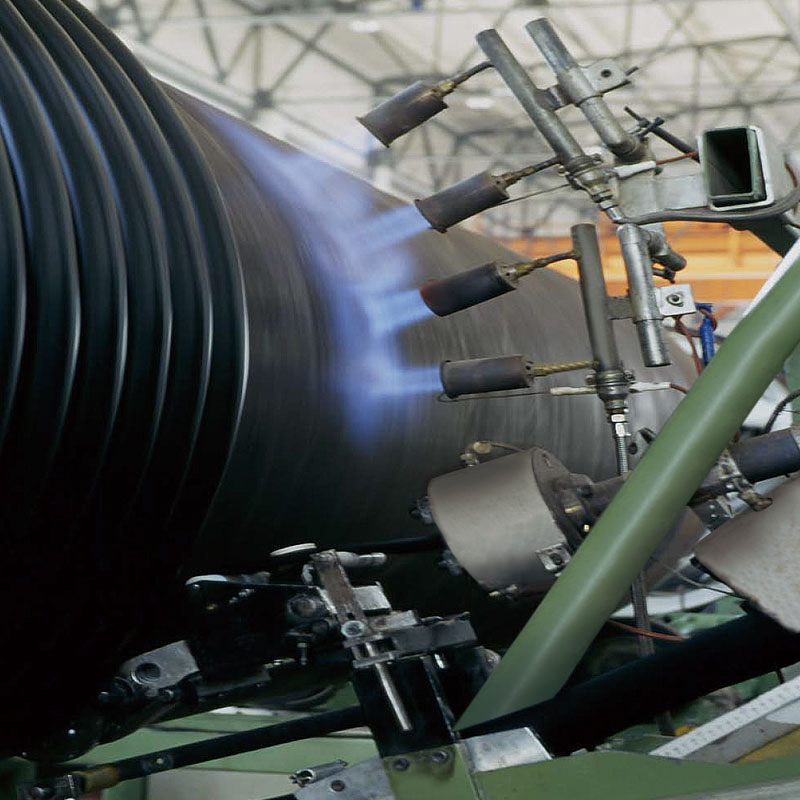Unraveling the Artistry: The Intricate Extrusion Process Behind Type B Structural Wall Winding Pipe Manufacturing
2023-11-14
Introduction:
In the realm of advanced engineering, the manufacturing process of Type B Structural Wall Winding Pipe is a symphony of precision and innovation. At the heart of this symphony lies the extrusion process, a complex and fascinating technique that transforms raw materials into durable and structurally sound pipes. In this blog post, let's delve into the intricate dance of the extrusion process, uncovering the steps involved in crafting Type B Structural Wall Winding Pipe.
1. Raw Material Selection:
- The journey begins with the careful selection of raw materials. Type B Structural Wall Winding Pipe is often crafted from a blend of polymers, composites, or other specialized materials chosen for their strength, durability, and resistance to environmental factors.
2. Extruder Assembly:
- The heart of the extrusion process is the extruder—a sophisticated machine that houses a rotating screw. This screw serves the dual purpose of compressing and heating the raw material to prepare it for shaping.
3. Material Preparation:
- The raw material, typically in the form of pellets or powder, is fed into the extruder. As it moves along the barrel, the material is subjected to increasing heat and pressure. This process is essential for achieving the desired consistency and workability.
4. Melting and Homogenization:
- Within the extruder, the raw material undergoes a transformation from solid to molten form. This molten material is thoroughly mixed to ensure a homogenous blend, critical for maintaining consistent properties throughout the Type B Structural Wall Winding Pipe.
5. Shaping through the Die:
- As the molten material exits the extruder, it passes through a specially designed die. The die imparts the precise shape and dimensions required for Type B Structural Wall Winding Pipe, shaping the material into a continuous profile.
6. Cooling Process:
- The freshly shaped pipe profile is then subjected to a cooling process. This step is crucial for solidifying and setting the material into its final form. Controlled cooling ensures the pipe retains its structural integrity and dimensional accuracy.
7. Reinforcement Integration:
- Depending on the specifications of Type B Structural Wall Winding Pipe, reinforcement materials such as fibers or composites may be integrated during the extrusion process. This step enhances the pipe's strength and resilience to external forces.
8. Sizing and Cutting:
- Once the pipe has undergone the extrusion and cooling stages, it moves through a sizing process to achieve precise dimensions. Subsequently, the continuous pipe is cut into individual lengths, ready for further processing or use in construction projects.
9. Quality Control Checks:
- Quality control is integral to the extrusion process. Various checks, including dimensional accuracy, thickness consistency, and material properties, are performed to ensure that each Type B Structural Wall Winding Pipe meets the required standards and specifications.
10. Additional Finishing Steps:
- Depending on the intended application, additional finishing steps may be introduced. These could include surface treatments, coatings, or inspections to enhance the pipe's durability, aesthetics, and adherence to specific industry requirements.
Conclusion:
The extrusion process is the artisanal craft that breathes life into Type B Structural Wall Winding Pipe. From the careful selection of raw materials to the precision shaping within the extruder and the meticulous quality control checks, each step contributes to the creation of a durable, versatile, and structurally sound pipe. This intricate dance of technology and craftsmanship ensures that Type B Structural Wall Winding Pipe stands at the forefront of innovation in modern engineering and construction.


